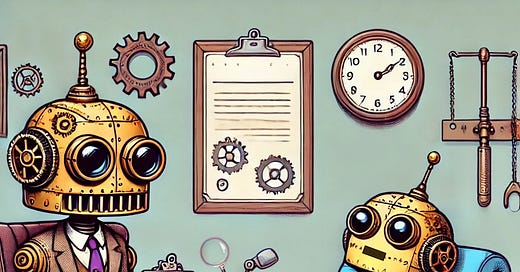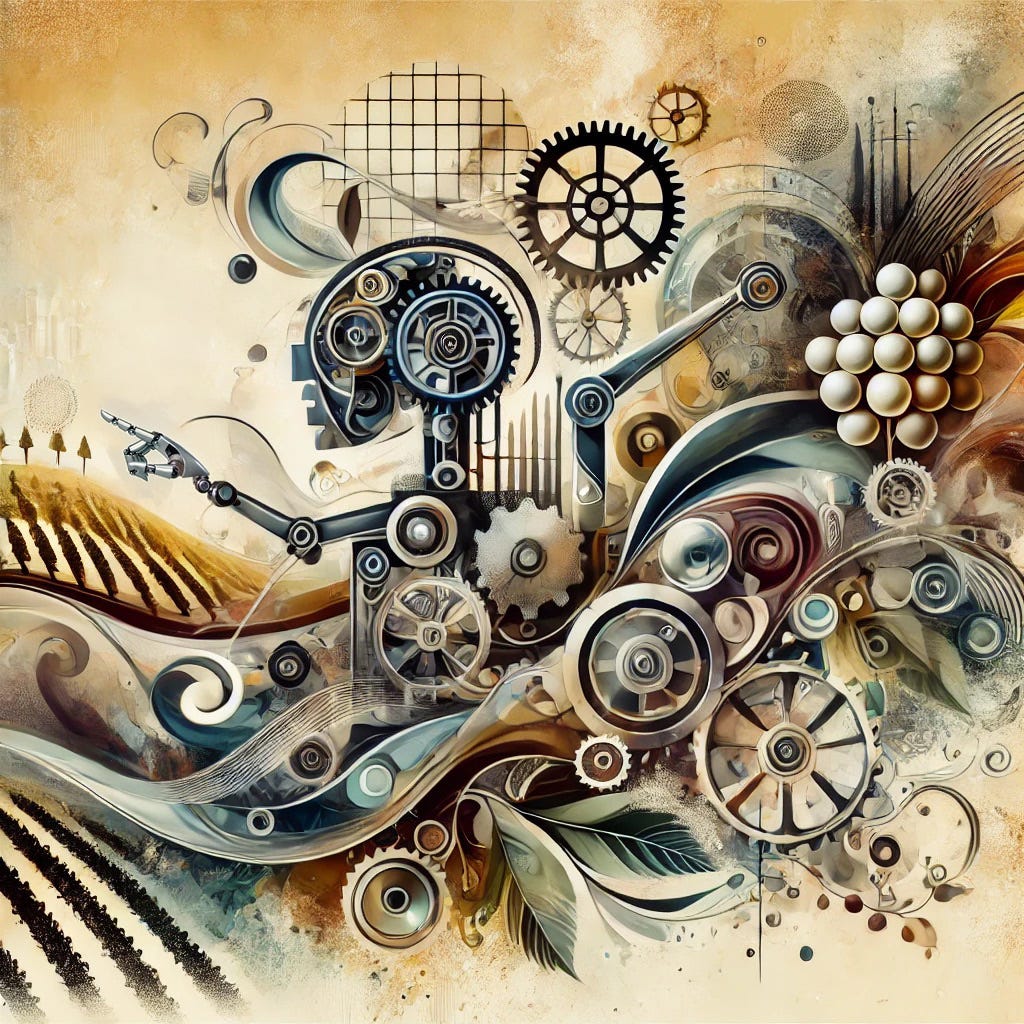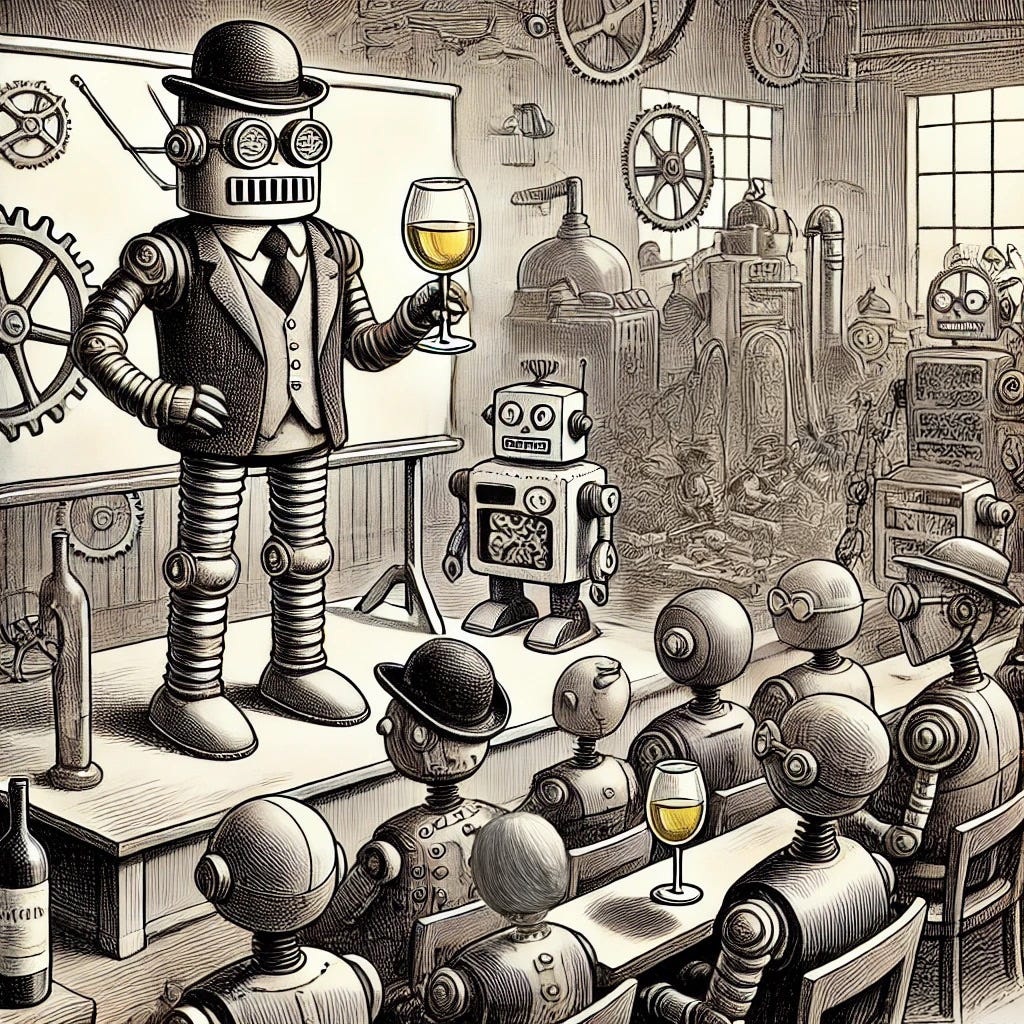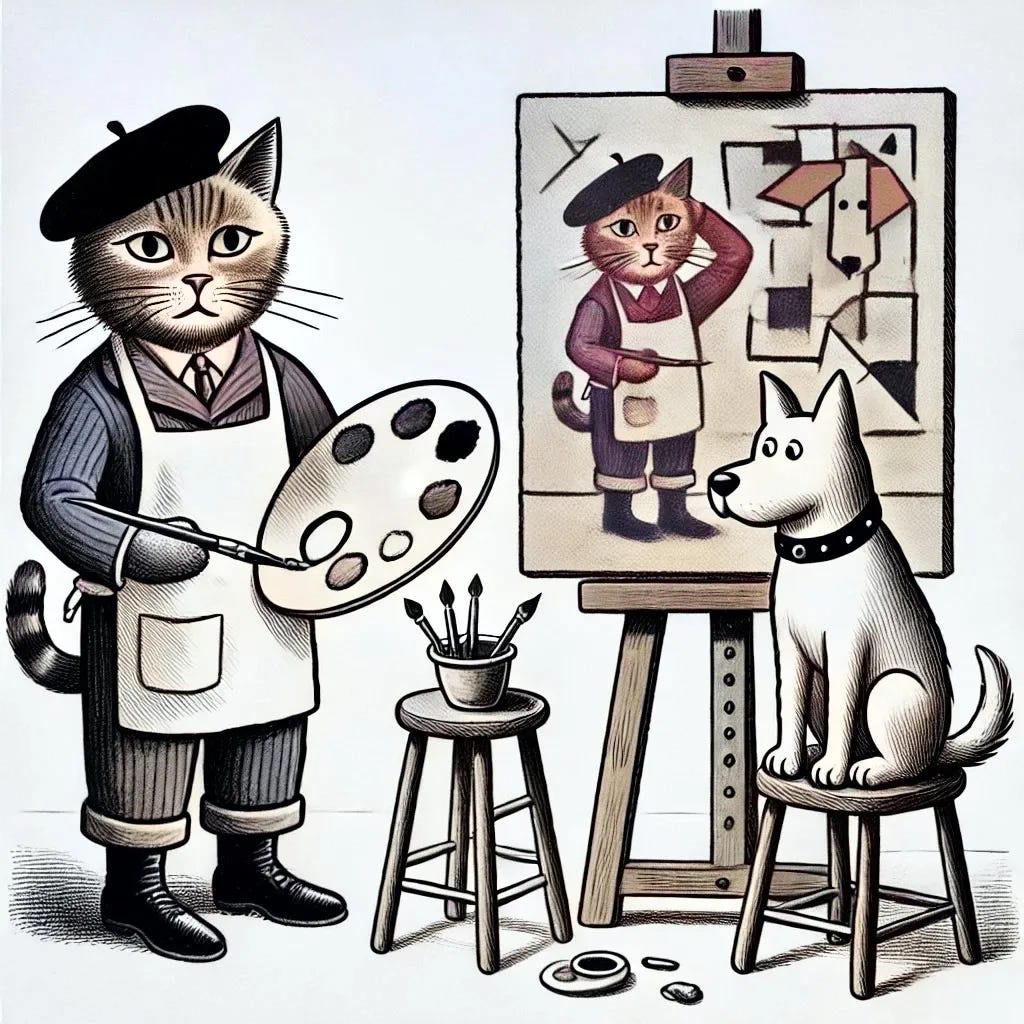NAPA VALLEY, Calif. — Like most people I know, it has just been in the past year that I have been thinking about artificial intelligence. I was familiar with the concept, of course, but it was my colleague Tim Carl’s column in January, titled “AI Will Take Your Job, Eventually,” that snapped me to attention. And then along came other evidence that the future where I had mentally consigned any such threat might already have arrived.
Now it seems like everywhere I go people are talking about this phenomenon. Newspapers, magazines, the internet and TV all have something to say, often making dire predictions that range from AI’s disruption of the upcoming presidential election to robots taking over the planet and blowing us all to smithereens. A study group to which I belong has designated this the “year of AI,” booking speakers to tell us how this marvel might affect government, business and the arts.
One of my friends who works as an assistant in a law office delightedly told me that now when a meeting has finished, she can distribute notes within moments after the partners have adjourned. “Thank you, AI!” she sang when she related this information to me. Equally enthusiastic was the call from my son to tell me he had been able to adapt AI software to the needs of his company. If I didn’t get on board soon, he countered my reticence, I would be technologically left behind, as irrelevant as typewriters and dial telephones.
Both of these people deal in figures and facts, but for those of us who consider ourselves to be creatives, the innovation seems to pose a real problem. At a party, I moaned to an architect friend that I was afraid AI could replace my storytelling work. “You’re worried!” he barked back. “Soon people will be able to tell a computer program to design a three-bedroom, two-bathroom house with a patio and minutes later have the printer spit out the blueprints.”
In my own experience thus far, AI has not been my friend. Someone in a Zoom meeting I was attending used a note-taking program to which I must have inadvertently agreed. The next thing I knew it was taking notes every time I signed on to Zoom. At one meeting of 25 people it announced, “Glenda is using AI to take notes.”
Embarrassed beyond belief, I spent the rest of the meeting smiling into the camera while I searched frantically for a way to disable it, not even knowing what it was called. I thought I had taken care of it, but the next time that same group met, there it was again. That time I scoured my apps to find the scoundrel and was finally able to eradicate it. Was I sure I wanted to delete the app, a message on my screen asked. Yes, I so was. As to the notes it took, in both cases they were almost correct, but not quite.
Meanwhile comes an email from Zoom saying I don’t even need an outside program for note taking anymore. A new version comes with it built right in. Ditto the new iPhone that promises a more personal and thus more useful relationship with an AI-enhanced Siri. I am directionally challenged, and I count on Siri — in my case a lovely English gentleman — to get me where I need to go. I’m grateful to him, yes, but do we need to be closer? Do I need for him to remind me to return phone calls and show up at whatever functions are on my calendar? Do I really want more of the noise and pressure that clutter my life already?
Another article I read recently was about a dating app called Rizz, which claims AI can be a good wingman for anyone looking for a partner. What exactly would that look like? Romantic it is not.
But some good news is being written about this futuristic tool, too. Paul Wiseman, writing for the Associated Press, says, “… AI may not prove to be the job-killer that many people fear. Instead, the technology might turn out to be more like breakthroughs of the past — the steam engine, electricity, the internet: that is, eliminate some jobs while creating others. And probably making workers more productive in general, to the eventual benefit of themselves, their employers and the economy.”
And Austin Kleon, a columnist whose work about creativity I love to follow, did a wrap-up of news about AI in the arts that I also found encouraging. It included comments by Brian Merchant, who authored “Blood in the Machine” about the Luddites who tried to quell the Industrial Revolution in the 19th century. He says it is a matter of deciding what AI can do for us — figuring out how to use it to augment jobs instead of replace them and always with the caveat that the human has the last word.
Benjamín Labatut, author of “The Maniac,” another book about AI, agrees in a piece for Harper’s: “Al is here already,” he writes, “but what we choose to do with it and what limits we agree to place on its development remain decisions to be made.”
This is good news for people who work in such sectors as manufacturing and medicine, but to go back to my question, what about the creatives? I finished writing my fourth novel this summer. Will it be the last? Is a machine somewhere at this very moment churning out the next Nobel Prize-winning piece of literature?
Ted Chiang at The New Yorker says no.
“The task that generative A.I. has been most successful at is lowering our expectations, both of the things we read and of ourselves when we write anything for others to read,” he says. “It is a fundamentally dehumanizing technology because it treats us as less than what we are: creators and apprehenders of meaning. It reduces the amount of intention in the world.”
Witness the fact that the pieces that used to be called stories, poems and essays now publish under the catchall word “content.” Am I whistling in the wind when I hope this makes room for people who do still work with intention?
Visual artists can take heart, too. The people at ProCreate, the app that enables artists to draw, design, paint and illustrate digitally, says on their website that they will “not be chasing a technology that is a moral threat to our greatest jewel: human creativity.” And it was the theatrical arts that led the way for all of us when writers and actors went on strike to protect their work from AI manipulation last year.
Call me a modern-day Luddite if you will. I’m open to seeing what happens and to change when it looks to be for the best. For now, however, I’m going to revel in doing my work with the aid of my trusty computer and nothing more. When it comes to committing my thoughts to paper, my brain is the machine I still trust the most.
If today’s story captured your interest, explore these related articles:
The Historical (And Personal) Significance of Mexican Independence Day
Sunday E-dition: Frank Trozzo’s “IMAGINE THAT!” Art Show is a Fantastical Experience
Ray Ray’s Tacos Adds Spice to St. Helena’s Expanding Food Scene
Sunday E-dition: Mental Health Tips for Caregivers and Students
Sunday E-dition: End-of-Life Planning for Peace in Challenging Times
Sunday E-dition: Retired Judge Brings Real Napa Valley Crimes to Life
Sunday E-dition: WineaPAWlooza Raises $1.1 Million for Animals
Glenda Winders is a novelist, freelance writer and copy editor for Napa Valley Features.
Levity Corner
Caption contest: Pick your favorite caption or add your own in the comments below.
Possible captions:
"I just feel so... disconnected lately."
"It’s like I’m constantly running on low battery."
"I’ve been grinding gears over the smallest things lately."
"I keep over-analyzing my algorithms."
"I feel like I’m just a cog in the machine, you know?"
Last week’s contest results
Due to a technical issue, last week’s caption contest didn’t register votes. We’ve included it again because we’re eager to see which caption you feel best fits one of our favorite submissions.
"I call this: 'The Genius at Work.'"
"The hardest part of art? Capturing my magnificence."
"Sure, you’re cute, but have you seen me?"
"Every stroke is a battle between humility and perfection."
"Painting when you're the masterpiece is tricky."
Last Week
Rosemarie Kempton reported on the 36th Annual Open Studios Napa Valley, where 90 artists across 57 studios welcomed the public to view their work during the last two weekends in September. The event, organized by the Art Association Napa Valley, featured live demonstrations in various media, including painting, ceramics, glass and sculpture. Dar Merle, a recent Napa transplant, showcased her acrylic paintings and was honored with her artwork on the event's directory cover. Morrie Warshawski, Parker Hall and Nancy Willis were also among the participating artists, each sharing their unique artistic motivations and creative journeys. The Jessel Gallery in Napa displayed pieces from 75 participating artists to offer a preview of the diverse works on show.
In last week’s “Green Wednesday,” Susan Crosby of Napa Climate NOW! highlighted the “Earth Friendly Eatery” decal program in her article "Earth Friendly Restaurants Step Forward," which recognizes local restaurants that reduce waste through reusable foodware and environmentally responsible practices. John Durham of the U.C. Master Gardeners of Napa County shared a guide to Filoli in "Put a Visit to Filoli’s Gardens on Your Must-See List," inviting readers to explore the estate’s English-inspired gardens, scenic trails and rich history.
Dan Berger explored the persistent trend of sweetness in U.S. wines in his article "The Sweet Seduction," noting how sugary wines have evolved from inexpensive offerings like Riunite to fine wines costing hundreds of dollars. Berger traced the history of wine fads, including the rise and fall of sweet moscato and the ongoing appeal of sweet chardonnay. He highlighted how even fine red wines, including some cabernets, are now made with residual sugar, often masked by sterile filtration, which can hinder the wine's aging potential. Berger criticized the trend of high scores given to expensive wines, suggesting that sweetness often goes unchallenged by critics.
Paul Franson profiled Ted Hall of Long Meadow Ranch in “Ted Hall of Long Meadow Ranch — A Musician Hiding in a Vintner’s Body,” highlighting his unexpected parallel life as a trombone player and jazz enthusiast. Hall, known for his contributions to organic farming and founding Farmstead Restaurant, also co-founded the Timothy Hall Foundation Benefit Concert, which supports K-12 arts and science programs. This year’s concert on Oct. 6 will celebrate Henry Mancini’s 100th birthday and feature the LMR Jazz Orchestra with special guests, including Mancini’s daughter Monica Mancini and Grammy-winning musicians Tom Scott and Gregg Field.
Tim Carl reflected on the ongoing threat of wildfires in Northern California’s wine country in his article “Living with Fire in Northern California's Wine Country,” drawing from his personal experiences during the 2020 Glass Fire evacuation. Carl recounted how wildfires have become a recurring nightmare, devastating homes, businesses and vineyards, and leaving the community in a constant state of anxiety each fire season. He highlighted the toll on local industries, particularly tourism and wineries, and the impact of climate change as fires grow more intense and frequent. Despite a recent reprieve from major fires, Carl described a community feeling vulnerable, unified by shared resilience but always bracing for the next disaster.
Next Week
Next week we have more interesting articles from a host of Napa Valley Features contributors. Napa Climate NOW! will join the “Green Wednesday” posts with climate-focused insights alongside the U.C. Master Gardeners of Napa County’s horticultural advice. Dan Berger will bring his 42 years of wine writing experience to Thursday’s Wine Chronicles. The Friday Weekender will feature Napa Valley events, including Georgeanne Brennan’s look at eggplant abundance in the Weekender Encore. Kathleen Scavone will explore local efforts to support Monarch butterfly habitats and Tim Carl will spotlight the 25th anniversary of a lesser-known winemaker from a fourth-generation winery in the valley and dive into the data around the current low demand for Napa Valley wine grapes. Plus, more to come.











I believe NVF readers already understand that there is no such "thing" as "Artificial Intelligence". AI is simply a marketing fad term to describe a decades-long technological process. AI does not refer to an actual "entity". Having worked with electronic computers since they were first invented (I am that old!), I am amused by the current use of the terms AI and Artificial Intelligence. Take any recent article about AI and replace "artificial Intelligence" with "computer" and the article remains essentially the same.
At the end of the last century (I love using that term rather than "1998", for example.) we called it "expert systems". Nothing is really new about AI. Are we mistaking the output of large server farms, huge database systems, small computer chip sizes, sophisticated software, and high speed electronic machines as thought?
I like to consider my first introduction to modern artificial intelligence as the Encyclopedia Britannica - a massive searchable database containing much of the world's knowledge and available for "download" to your own home using a "post office link" for private use! Amazingly, I was then able to "upload" it directly into my brain using simple "text recognition" software through my "optical interface". The hours I spent googling through those books in grammar school were a world class adventure.
For some context on this AI feeding frenzy, please refer to my latest special report "Artificial Intelligence vs Natural Stupidity - Who's Winning?" in the Lake Berryessa News at: https://www.lakeberryessanews.com/
I recently read a chilling description of what may happen if unlimited human greed proceeds down an AI path. I found it in a book by one of my favorite authors, Gregg Hurwitz, in his Orphan X series titled Lone Wolf. I included it in my report. It's a bit long, but it develops a stream of consciousness cadence as you read it. I think you'll recognize the trends.
An Interview with an Evil Genius
Everything that can be electrified can be monetized, but you can't monetize a corpse (or can you?).
And remember, all productivity gains and efficiency increases will go, as they do now, not to the people doing the work, but to the corporations that squeeze and layoff the people doing the work.